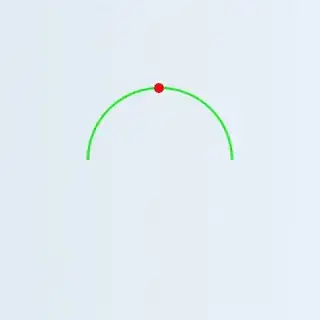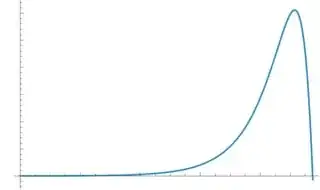These are two well-known problems in classical mechanics that yield the same critical result:
Problem 1: Ball on a Hemisphere
A small ball of mass $m$ is placed at the top of a smooth (frictionless) hemisphere of radius $R$. An infinitesimal push is enough to start its motion. As the ball slides down, it eventually loses contact with the surface.
Using conservation of energy and normal force analysis, we can show that the angle $\theta$ (measured from the vertical) at which the ball loses contact with the hemisphere satisfies:
$$ \cos\theta = \frac{2}{3} $$
Problem 2: Falling Rod Against a Wall
A uniform rod of mass $M$ and length $L$ is placed perfectly vertically against a frictionless wall and a frictionless floor. It’s initially at rest but slightly disturbed. As it slips, it rotates and eventually loses contact with the wall.
Once again, it turns out that the critical angle $\theta$ (measured from vertical) at which the rod loses contact satisfies:
$$ \cos\theta = \frac{2}{3} $$
The Coincidence
These two problems, despite being quite different physically — a sliding point mass versus a rotating rigid body — give the same critical result. This seems like more than a coincidence.
My Intuition and Attempt to Connect Them
(This is a rough animation attempting to illustrate the idea. It doesn't quite capture the crucial moment when contact is lost — my apologies for that.)
I tried visualizing the rod as the diameter of a circle. As it falls, if you track the point on the wall that was initially touching the upper end of the rod, it traces a quarter-circle path — just like a ball sliding down the surface of a hemisphere. It then moves away from the rod, analogous to how the ball loses contact and moves away from the hemisphere.
In this analogy:
- The point on the wall in contact with the rod is analogous to the ball on the hemisphere.
- The rod itself is like the diameter of a hemisphere.
- The center of mass of the rod corresponds to the center of the hemisphere.
If you think in a non-inertial frame or visualize the geometry more abstractly, it appears that the ball and the falling point on the rod follow similar paths relative to their respective centers. Both systems:
- Are in unstable equilibrium,
- Require an infinitesimal push to begin motion,
- Lose contact at the same angle $\theta$,
- Are subject to the same gravitational acceleration $g$,
- Follow quarter-circle arcs (in some frame of reference).
What I'm Asking
Can this visual and intuitive similarity be made rigorous?
- Is there a mathematical or physical equivalence that proves these two systems are fundamentally the same?
- Can we show that solving one problem yields the other — not just the same angle — but that their equations of motion are formally equivalent in some sense?
- Or is the shared result of $\cos\theta = \frac{2}{3}$ a coincidence arising from different dynamics that just happen to converge at this value?
Any insights from classical mechanics, analytical dynamics, or geometry that could confirm or refute this equivalence would be greatly appreciated.
Thanks for reading — I’m very curious to know if there's a deeper reason behind this elegant similarity!



